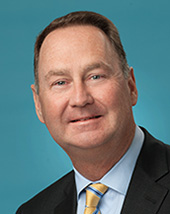E-News Exclusive |
 Health Care Industry Consolidation:
Health Care Industry Consolidation:
Focus Needed on Workforce Challenges
By Dan White
A major challenge in every health care industry merger is integrating, managing, and optimizing the newly consolidated organization’s workforce. Success in this endeavor is critical; it directly affects patient experience and outcomes and the organization’s biggest expenditures. The workforce accounts for more than one-half of operating budgets for hospitals, health systems, and other health care facilities.
The common belief is that consolidation results in economies of scale, allowing the new organization to do more with less. But that isn’t always the case—or a given—when it comes to the health care workforce, which is usually stretched thin.
Most health care organizations are already experiencing shortages of professionals ranging from nurses and physicians to coders. Consolidation won’t help solve these problems, and in fact may make them worse if none of the enterprises has expertise in effective workforce solutions. A merger of two health care organizations facing workforce shortages and other staffing problems may mean double the problems without these solutions.
Importantly, workforce challenges will likely get worse for health care organizations as they consolidate. Demand for health care services is rising in the United States, driven by an aging populace that utilizes approximately three times more care than the general population, and an improving economy where more people have jobs with health care benefits. Consolidation doesn’t alter the upward trend in demand; a newly combined workforce faces challenges from both integration and extra demand for services.
Workforce Responsibilities in a Merger
The health care mission is driven by the workforce, whether it’s in enhancing the patient experience, improving care quality, delivering on economies of scale, expediting the shift from volume- to value-based care, implementing new population health strategies, improving revenue cycle management, or launching new technologies. During a consolidation, the complexity of integrating the workforce is impactful, and it’s critical to get it right.
To meet this goal, the newly consolidated organization must successfully combine diverse workforces that have entrenched and often widely different quality standards, procedures, training, values, and cultures. Consistency across the consolidated organization must be attained through standardization and adoption of best practices in order to optimize the integrated staff.
The current wave of health care consolidations is producing sophisticated enterprises of vertical and horizontal services and facilities stretching across multiple states. Some are emerging from consolidation as Fortune 500 companies face serious challenges in stiffening regulatory compliance, an increasingly competitive environment, rising consumerism, uncertain state and national policies, dramatically changing reimbursement requirements, and growing shortages of all types of workers.
Consolidation-Related Workforce Solutions
Solutions to workforce challenges need to become more sophisticated to match this growing organizational complexity. The talent imperative in health care is among the most powerful problems that health care organizations face. A continuum of effective workforce innovations, many of which have been in use in other industries, are now available in the health care industry, but they have been largely untapped until recently.
Comprehensive managed service programs that optimize the contingent workforce are becoming mainstream. Radical new credentialing innovations can be leveraged to improve time-to-revenue and productivity for physicians and other clinicians. Predictive labor analytics can accurately forecast patient volume months in advance and then match scheduling and staffing practices to the forecasts.
Workforce solutions also are available to help find the best talent for leadership roles, which are critically important to guide an industry undergoing fundamental revenue changes based on value instead of volume, while adding the objective of population health along with individual health. The vital realm of coding and HIM is another area where workforce solutions can raise performance in quality, efficiency, and revenue generation.
Unfortunately, many health care organizations remain in a reactive mode when it comes to solving workforce challenges, scrambling to fill holes in staffing on a daily basis instead of strategically planning how to recruit and hire the people they need or to optimize the staff they already have. Many organizations still rely on inadequate paper-based and/or disparate systems to manage workforce challenges. A lot of scheduling is still done with magnets on whiteboard calendars or on software a decade out of date.
Expert Solutions to Complex Problems
Health care organizations emerging from the wave of consolidations need more advanced solutions to their daily and strategic challenges. Modern health care workforce solutions are needed, but many organizations don’t have the resources, capacity, or bandwidth to develop and implement these solutions on their own. Or, they are unaware that advanced, technology-enabled workforce solutions are available to them.
The bright spot is that mergers deliver greater combined resources to the new entities, which they can invest in advanced technology-enabled systems, including workforce solutions that can ensure their enterprisewide staff is optimized and performing at its highest level. Rather than trying to build these complex internal systems, consolidated health care organizations can partner with workforce experts who have already developed technology-enabled solutions.
While health care mergers and acquisitions activity may soften from the intensity of the past few years, consolidation will continue and workforce integration challenges will test the success of current and past mergers. Since the health care workforce represents the largest cost for any health care enterprise and health care workers are responsible for the quality of patient care and experience, the workforce is the greatest differentiator of success in consolidations. Partnerships with workforce solutions experts may be critical to achieve success, both during and after a health care industry merger.
— Dan White is president of strategic workforce solutions for AMN Healthcare.



